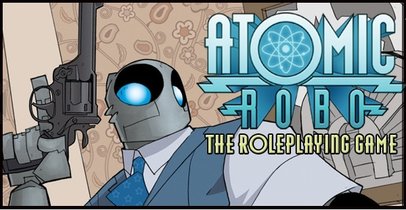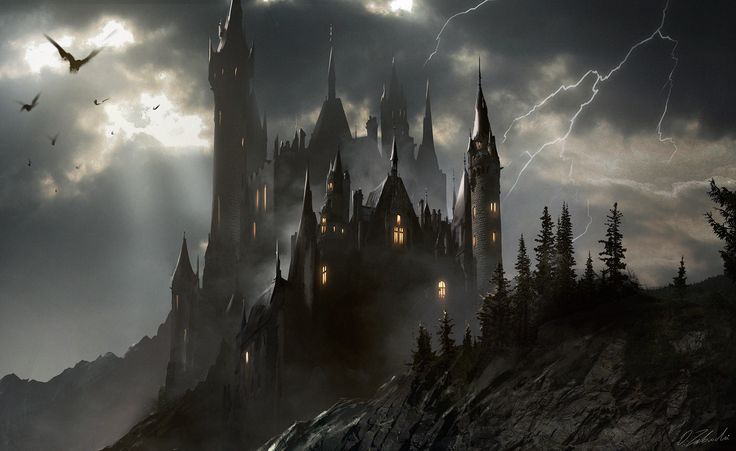 It is the easy to get lost in a crowd. With the amount of RPG’s coming out (dare I say daily), every now and again, a gem is produced, only to be immediately swallowed by the avalanche. The following are my opinions on a number of rule systems I’ve came across over the last year or so. Some might be much older (or really well know to all but myself), again, it’s only recently that I came across them, and (no offense meant) they feel like they aren’t as popular as some. Without further ado, here they are. 1) 7th Sea Aaaarrrrrrr, ya scurvy dogs! It be pirates! 7th Sea, presents a fantasy world heavily influenced by the golden age of piracy. Think Pirates of the Caribbean and also every other pirate movie and/or book ever made. The setting surprised me, in the best possible way. The the world given to us is a series of jagged coastlines and islands. Most of these areas belong to different political units, and work very differently from each other. It’s easy to see that this map is a parody of our own world. It shouldn’t be surprising that someone in the 17th-18th centuries with a Scottish cultural upbringing, would be a different person/sailor/pirate than someone with a Mediterranean early life. Also there are fencing fighting styles, it’s really very cool. The dice system is great, involving a pool of D10’s, adding numbers up to 10, and something called ‘raises’ that allow you to do exceptional things. http://7thsea.com/ 2) Belly of the Beast This rule system is pretty straight forward, dice-wise, and the setting is amazing. Centuries ago, a huge asteroid slammed into this planet. Massive crater, some destruction. Decades later, something hatches from the site of the impact. According to the description, it looked like an Arrakis Sandworm, just much, MUCH bigger. After many years eating everything that wasn’t nailed down, (and most things that were), the Beast has grown to the size of a mountain range, hundreds, if not thousands of miles long, and as wide as a country. Effectively, you play a medieval fantasy setting INSIDE THE GUTS OF A CONTINENT SIZED WORM. Oh yes, things, survived being swelled hole, and the digestion process looks like it takes millennia. Imagine. Humans being born and dying without seeing the sky, only knowing the country-sized chambers of the Beast’s digestive tract. Action centers around the physical and political dealings of humans with very little resources (so mostly scavengers and mercs), and there’s a sense of heaviness to the scenario, which I love. Dice are a pool of D6’s, rolling to a Target Number. http://www.drivethrurpg.com/product/192736/Belly-of-the-Beast-RPG?term=belly+of+the+beast&test_epoch=0 3) The End Of The World On the surface, these Fantasy Flight books are simple post-apocalyptic settings, Nothing exciting about that, surely. What makes it different are the characters. If you, Jane Smit, play the game, your character is Jane Smith. As in, YOU are your character and vice versa. Character creation is a collaborative effort, so your character is, to the best of your efforts, YOU. The idea; the world ends (there’s 4 different books, Zombies, Aliens, Robots and Wrath of the Gods), and you are caught in the middle. Your equipment is whatever you usually have about your person. Mobile phone, lighters? That sort of thing. Dice system, you roll D6 for positives and D6 for negatives, and remove matching ones. https://www.fantasyflightgames.com/en/products/the-end-of-the-world/ 4) Atomic Robo I like to call Atomic Robo what would happen if steampunk was wound forward to the present. A 21st century, where the past 150 years were dedicated to science. The titular Robo was built by Nikola Tesla in the 1930s. He’s a joke-spewing, nuclear-powered robot, who we follow throughout his career with the US military, then a series of scientific institutions. Robo (to his friends) is a sort of metal scientist Indiana Jones. He travels the world looking for alien artifacts and fighting evil geniuses. In this universe, science reigns supreme, so evil scientists pop up like mushrooms. A fun and engaging background, using the FATE rules. http://www.evilhat.com/home/atomic-robo/ 5) Star Wars D6 This is older than old. The D6 system is, well, old, but I do feel it should get a second look. You roll a number of D6s and you see if you reach a target number. That’s it. It makes the whole game run fast and smooth and I do love it to bits. Also there’s an oldness to the background (I’ve said ‘old’ a lot, bear with me). The corebook, I found, is almost incomprehensibly written, when it comes to character creation, for example. But there’s something amazing about a book about Star Wars that was written 2 years after Jedi. Before the Expanded Universe. Before the Phantom Menace. The good bit is that this is a rule system that is still in common usage, so there is A LOT of fan made content out there, including fantastic, easy to understand versions of the above mentioned corebook. http://krapz.free.fr/ What less known rule systems have you come across? Rui is a Portuguese scientist that, after ten years doing strange things in labs, decided to become a teacher. Then, two years ago, like he was bit by a radioactive D20, RPG’s came into his life, and he’s now juggling teaching, playing and GMing quite happily. He lives in the UK with his partner Joana, an ungodly number of potted plants, 4 to 5 RPG’s at various stages of completion (and across as many rule systems), and maps, cursed idols, evil necklaces, and any other props he can get his hands on. He’s been writing for HLG for a few months, and is one of the resident vloggers. He can be reached at @Atomic_RPG.  So, you want to start a podcast? Or some other media by which you hope to broadcast your gaming session to the world? It seems simple, and on one hand, it is: put a microphone on the table, record everyone playing, and bam, instant content. However, if you want to produce something that anyone other than those sitting around the table would actually want to listen to (such as HLG’s Aether Sea or Black Squadron), it takes a lot more finesse. Below are three factors to consider when deciding whether to create or play in a broadcasted game. 1. Censorship We over here at High Level Games are a vile bunch, veritably bursting with all manner of intellectual putrescence. However, the content we produce is still closely monitored and edited to avoid giving off certain kinds of offensive messages (e.g. discrimination). While this is well and good, it forces you to be mindful of everything you say. It’s not that offensive speech necessarily gushes forth whenever we open our mouths, but we need to avoid creating situations where things can be misinterpreted. Certain words might become taboo, certain phrases or situations avoided. Thanks to the wonders of post-production editing, it’s not the end of the world should someone inadvertently promote racial genocide, but it is more work for whoever’s doing the editing. Having to censor your words and actions in game takes more forethought and planning than a regular game session and can take away some of the fun (at least until you get used to it). 2. Entertainment Let’s say you have no ethical or moral standards whatsoever and impose no censorship on your broadcasted session. You still need to entertain your listeners and that requires a certain style of play that might be different from that which you may be accustomed. The world and gameplay need to come alive by the words of the players. This requires vivid descriptions of all environment, people, actions, weapons, or anything else which exists in the game. It requires you to put the scene into the mind’s eye of your listeners and speak life into it, accessing your theatrical sides to put on the show. That’s not to say you must do funny voices or exotic accents, but they certainly help. You don’t have to be witty or come up with hilarious quips, but they certainly help. You know that hilarious inside joke you have with your friends? No one else is going to get it, so it gets nixed. Some of us are naturally more gifted artists (not me) than others (definitely me) and it can be a struggle to produce a story to which anyone would actually want to listen. Even something as simple as reading out the number that you rolled doesn’t come naturally to us as tabletop gamers. It can make the gaming session seem more like work than play, at least until you get used to it. 3. Technical proficiency This is a small detail, easily overlooked when thinking about creating something like a podcast. This sort of endeavor requires that there be a certain level of technical expertise in the group. Firstly, there is knowledge of audio hardware and software. If you are all playing together in one location, just one person needs to have a nice mic and be good at getting everything set up; however, if you are playing online, everyone needs to have a good mic setup and know how to set up the audio settings properly. Recording software is becoming increasingly user-friendly as time goes on, but you will need to understand how to properly utilize the software (and don’t forget to save the audio recordings). Secondly, at least one person needs to have knowledge of the post-production editing software and process (as this is not me, I can not speak any further to this, other than that it is by far the most crucial step in this whole process). Lastly, someone needs to know to put the content online and, more importantly, distribute and promote it. As this is also not me; see VP Quinn (the marketing genius behind HLG) if you want to know more about how he works his magic. Playing a role-playing game with the intention of broadcasting it to the world can be very enjoyable. It is akin to performing on stage: your performance becomes something meant for others rather than yourself. It requires a different mindset than a normal gaming session but can be more rewarding. I mean, how awesome is the prospect of entertaining not just you and your friends, but the world? Jake is High Level Games most devilishly handsome correspondent and plays the devilishly handsome Squall Santail in HLG’s Star Wars Black Squadron Actual Play.  I have to admit, sometimes I am a lazy role-player, and more recently I am the laziest role-player. I expect to turn up at the latest session -ready for fun- with little-to-no time in preparation. I haven’t always been this way. I have done the GMing stuff where there is more work involved, but at this point in my life I want a gaming experience that takes me away into the mythical world and away from the drudgery of laundry and lesson planning. However, my foray back into regular gaming was not my easy, comfortable sweater that I expected and wanted to slip on. No, it was shiny new settings and games, and I had a lot to learn. As lazy as I am, I am glad for it. 1 . New games make you read I know it sounds like a boring reading comprehension test, but with new systems and settings comes new ideas and ways of looking at role-playing. And every rule/adventure book has its own feel that you become immersed in. Now, I’m not talking about just skimming the pages until you see numbers underneath the class/race/occupation/skills that make your eyes light up (but you do need to do that as well). I am talking about reading about the world that has been lovingly crafted for you to explore or being consumed into a new culture through someone’s words. These can be the clearest depiction that gives each person the same sense of what is going on or they can be an outline that make you develop those places and people together. Often a completely new setting will spark your imagination and energise your play. Furthest to the south is the sandy and inhospitable lands of the Owl Clan, who share strange and arcane secrets with the emptiness of the desert. They are known for consorting with spirits that often spell ill to their "mistresses." From a stone-age fantasy D&D 5E setting created by VP Quinn 2 . New games make you think and role-play differently We all fall into a bit of a routine with role-playing. Even those with a streak of interesting, dynamic characters often use similar techniques to get information, to engage in combat, or even to interact with NPCs and PCs. There are vastly different games each with their own idea of these interactions. They force you to think differently. As an investigator in the Cthulhu world, I started by looking into one thing at a time at one place… like some sort of linear path. What I learned was that sometimes a scattershot of searching sometimes works best. It is a small thing, but it is a skill I will use in other games. Also, with my first jump into the Cthulhu world being just a few months ago, the simple words from the first handout are a callback to an unending exploration of how I role-play and how fear can motivate action. A landlord, Mr. Knott, asks you to examine an old house in central Boston, known as the Corbitt House. The former tenants, the Macario family, were involved in a tragedy and the owner wishes to understand the mysterious happenings at the house and set matters straight. Mr. Knott been unable to rent the house out since the tragedy and hopes that you can clear things up and restore its good name. He offers to reimburse you for your time and trouble. The landlord gives you the keys, the address and $25 cash in advance. Call of Cthulhu, The Haunting What could go wrong? 3 . New games remind you of some of the awesome things you used to do Remember that one time, you put that clever twist on your gaming experience. No, not that one, the other one. Nope, not that either. I think you did it around 2005…. What do you mean you don’t remember that far back? Often, we remember the epic battles and the clever encounters from years back. We have told and retold them with great fervor. But sometimes it was the little things that added more interest to the group and kept things going. Often a new game will remind you of such experiences and rekindle the love of the minute details. Though my jump into 13th Age was only one session, I was enamored with their idea of the “One Unique Thing.” Often, I had characters with that extra trait that set them apart, but often as time went on those clever ideas were left behind in the process. This forced me to look at that critically at the beginning of character creation. It is now in the forefront of my mind as I am in the midst of making a new character right now. 4 . You have a chance to use different dice Seriously, I have some under utilized dice in my pack. I look forward to dusting off some d6s for this wade into the Star Wars 3E universe.(Editor’s note, Star Wars’ games seem to like using odd or specific dice. The fantasy flight version of SW has its own dice which are cool, but it also requires you buy their specific dice. It’s a marketing ploy only a big game can get away with.) This article was written by Vanessa who is a sarcastic, 30-something wife and mother. She likes things and stuff, but not simultaneously. When she isn’t involved in things and stuff, she teaches middle school science, math, art, and other random subjects. She loves new teenagers in action. They make her laugh and shake her head and her world is much better with laughter. She thinks everyone should be roleplaying. She is also trying out this new twitter handle at @sarasma_nessa  Welcome back to the Ravenloft Corner! Veteran gamers are familiar with the horrible dread that accompanies every sudden fog, knowing it could whisk them away from their comfortable campaign setting and into the nightmare that is Ravenloft. This is far from an isolated event, of course: most of the iconic NPCs of the setting are drawn from one or more existing campaign worlds, including Darklords such as Soth, Harkon Lukas, and Hazlik. Faerun, Greyhawk, al-Qadim, Dragonlance, Birthright: all these realms and more have been harvested for human occupants to bring to the Demiplane of Dread. However, the Mists are not limited to D&D settings--they can reach anywhere. This makes Ravenloft the ideal realm for crossover stories. The sinister possibilities are endless. Jedi, gunslingers, or mad scientists: the sky's the limit if you really want to bring elements from one game setting into your Ravenloft campaign. Alternately, instead of bringing another game into Ravenloft, you can introduce Ravenloft to another setting. Back in the day, being snatched away to the Demiplane of Dread for a single adventure was a common enough occurrence that it even had a name: Weekend in Hell adventures. For many other tabletop RPGs, this type of adventure can be just the thing to break up a stale routine. To get you started, here are a few of my favorite possibilities for locations that you could bring an NPC or two from without breaking the setting egregiously. 1 -Star Wars While lightsabers and blasters would be horrendously out of place, a single force-user would not be. Imagine the horror for a Jedi who escaped Order 66 only to find himself consumed by a bizarre stellar phenomenon which spat him out in Ravenloft. Now alone, in a world without the technology to which he is accustomed, he must battle against strange and arcane threats, with the inescapable feeling that this entire realm throbs with the pulse of the Dark Side. He can always sense malignant beings pulling the strings behind seemingly mundane misfortunes, but can never quite pin down their presence. Of course, the Dark Side would be much easier to tap into in Ravenloft, presenting him with an eternal temptation of vast power in exchange for his allegiance. 2- Doctor Who Although all the Time Lords in our universe are gone (save for a couple), there were many at one point. As a race with a penchant for getting themselves stuck in pocket dimensions or alternate universes, it's not inconceivable one of them could have made it to Ravenloft. (It seems quite likely that at least one of House's victims might have had the wherewithal to fashion some means to escape House's pocket dimension, albeit to the even-less-inviting environment of the Mists.) Stuck with only the technology of the era, such a being might embody the nobler instincts of their kind, traveling the domains and righting wrongs. Of course, they might also fall prey to the obsession and hubris that frequently grips their race, drifting towards Mordent and the possibility of finding a way home amid the 'new science' of Dr. Mordenheim. 3- World of Darkness Even without the Mists capturing someone against their will, the World of Darkness has plenty of ways for an unwitting character to find their way to Ravenloft. The Deep Umbra, the Far Realms, and arcane accidents of any variety could land a character in the setting. Characters from Vampire: The Dark Ages or Werewolf: The Wild West wouldn't even find themselves horribly out of place. Many tradition mages or changelings would be right at home as well. A pack of werewolves would have the fight of their lives in Verbrek, where virtually every inhabitant is fighting on the same level as they are. On the other hand, how much more dangerous would Strahd be while served by a small clan of Revenants, their own innate disciplines augmented by his potent blood? 4- Deadlands Another setting with many gateways to alternate settings (crossovers with Call of Cthulu and Werewolf aren't just possible, they're canon adventures), posses from the Weird West could easily find their way to Ravenloft. Perhaps they even discover some dark connection between the Dark Powers and the Reckoners? Although their technology might be a bit out of place in, say, Darkon, the firearms of the period aren't so odd as to be fantastical to those of the western core. To fit with the diabolical nature of the realm, of course, 'black' magic such as hexes, mad science, and the undead abilities of the Harrowed should be more potent than normal, with the concurrent penalty of attention from the Dark Powers. Maybe it's even more likely to come back as Harrowed, if not so easy to maintain Dominion... 5- Harry Potter Let's face it, magical accidents are obscenely common in the world of Harry Potter. Fortunately, magical denizens of that realm will find Ravenloft to be no huge adjustment. The need to hide themselves from non-magical beings will already be second nature, but the existence of the supernatural will be as well. In many ways, these witches or wizards might have an easier time blending in than outlanders from standard D&D settings do! 6- Warhammer 40k While this one might seem unusual for such a high-sci-fi setting, it's actually fairly easy. Remember that the many worlds in the Imperium have a huge technological spectrum, broader even than that in Ravenloft. Characters from low-tech worlds (Inquisitorial retinues or Imperial Guard conscripts) make the easiest possibilities, since they are already ready to accept magic as fact, and are perfectly willing to accept having been pulled through a warp storm into a demon world with belief (although maybe not much happiness). The immensely powerful psychics of the Eldar race might send a single advance scout through a forgotten Webway gate, hoping to find a new location to colonize. Of course, such a scout could never report back and would be stranded in this strange new world. Perhaps most frightening is the notion of a transpossession victim manifesting not the aura of a succubus or the spikes of an osyluth, but the weeping sores of a plaguebearer or the mind-numbing allure of a keeper of secrets. 7- Mayhem The world of the Mayhem game system bears much in common with Ravenloft and other D&D settings: there is a general medieval feel, the presence of magical beings, and a general lack of advanced technology. The Crimson Realms, as they are known, are far more open about their strangeness than other settings and Outlanders from that world would face several challenges. The bestial races would have to conceal their true nature, or be mistaken for escapees from the clutches of Frantisek Markov. The demonic and celestial races would be pursued diligently by hunters familiar with transpossession, or by Darklords, respectively. Even the fae or elemental races would find persecution in places like Darkon or Tepest. In Closing That's far from an exhaustive list, of course. Crossover potential is ripe in some of the best known franchises of nerd culture, such as Game of Thrones, Wheel of Time, the Dark Tower series, or Middle Earth, as well as some more obscure ones that your PCs might not be familiar with, such as John Peel's Diadem series or the worlds of Robin Hobb. Whether you draw PCs or NPCs from such realms, crossovers remain an integral part of the Ravenloft formula, and the Weekend in Hell will remain a constant threat to PCs in any and every other game. Hopefully, Frankie Drakeson will be back from his sabbatical next month, but until then, safe travels. Jim Stearns is a deranged hermit from the swamps of Southern Illinois. In addition to writing for the Black Library, he puts pen to paper for High Level Games and Keep on the Heathlands. His mad scribblings can frequently be found in Quoth the Raven, as well as anthologies like Fitting In or Selfies from the End of the World, by Mad Scientist Journal. Follow him on Twitter @jcstearnswriter. |
All blog materials created and developed by the staff here at High Level Games Archives
April 2023
Categories
All
|
Proudly powered by Weebly

 RSS Feed
RSS Feed